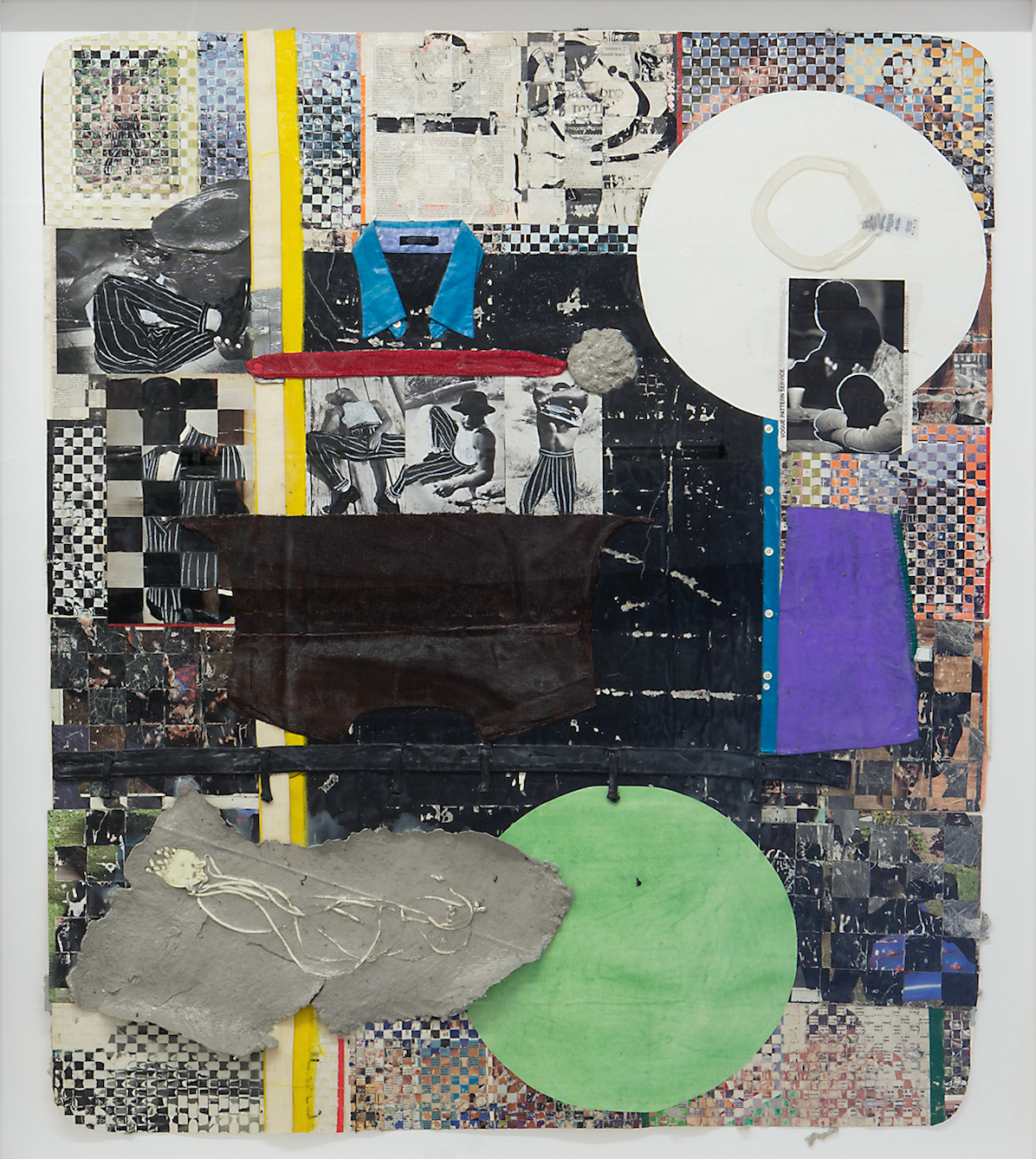Whitney Biennial 2019 | Art & Artists
May 17–Oct 27, 2019
Whitney Biennial 2019 | Art & Artists
Troy Michie
49
Floor 6
Born 1985 in El Paso, TX
Lives in Brooklyn, NY
Incorporating a wide range of materials—including found photographs, papier-mâché, and elements of clothing—Troy Michie’s works materialize the ways that historically marginalized communities are often alternately erased and fetishized, made invisible and hypervisible. The artist’s collages include photography from the pages of 1980s niche pornographic magazines that exclusively featured men of color, camouflaged in ways that withhold intimate details. Michie finds similar ambiguity in the zoot suit, a flashy, roomy style that became popular in African American communities throughout the 1930s and 1940s, influencing the Pachuco subculture that originated in his hometown of El Paso. For Michie the suit’s disruptive history is critical to reorienting how today’s media landscape highlights relations along the politicized U.S./Mexico border. The style is also a reminder of the ways self-fashioning can both advertise and disguise aspects of race, class, and gender. By including zoot suit fragments in the works alongside figures whose faces are blank, Michie implies the difficulty in preserving one’s visibility in the face of cultural bias.
Los Atravesados/ The Skin Of The Earth Is Seamless, 2019
-
0:00
Troy Michie
0:00
Troy Michie: My name is Troy Michie.
One of the influences with this body of work was the book by Ralph Ellison, The Invisible Man.
For me it wasn't so much about coming up with a camo pattern, but thinking about visibility versus legibility.
[All] of the four works presented are composed of multiple magazine pages that have been woven. So from like, half an inch, an inch, to two inch, and that just forms the substrate.
The magazines are sourced from niche pornographic magazines from the seventies and eighties only depicting men of color.
Part of that reasoning was that I was thinking a lot about just how bodies are portrayed in pornography often as fetish objects and I kind of wanted to, dematerialize the forms.
I grew up in El Paso, Texas which was my hometown. I went to undergrad there. So around the time of the election, it was important for me to try to make a body of work that really brought border communities to the forefront, with just all the misconceptions that were being said like hate speech.
In these compositions there's always a horizontal line, whether it's a belt or the top of a pair of pants. So I am thinking about line, whether it's horizontal or vertical, as an actual border or boundary.

